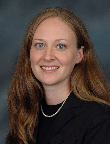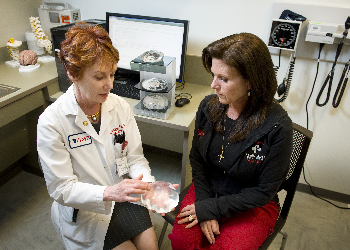By Drs. Techksell McKnight Washington and Karen Powers

Angelina Jolie’s recent announcement about her preventive double mastectomy

has left a lot of women wondering. When did she first learn she carried the BRCA1 gene? How long after she found out did it take her to decide to have her breasts removed? What were the steps involved? There are so many questions that arise for those not familiar with breast cancer genetics and breast reconstruction.
As breast specialists at UTMB, we can bring to light some of the details surrounding genetic testing, treatment options and reconstruction decisions. Jolie’s public sharing of her personal story has surely resonated with many women who think they may be at risk.
You should speak with your primary care physician about genetic testing if you had breast cancer prior to age 50, have a history of cancer in both breasts, had ovarian cancer at any age, are a male with breast cancer, have a family history with two or more people with breast and/or ovarian cancer on the same side of the family or know of a BRCA mutation in the family. People of Ashkenazi Jewish descent are at particular risk.

UTMB’s high-risk clinic in the Breast Health and Imaging Center has genetic counselors who can guide patients through screening and potential genetic testing for the BRCA1 or BRCA2 mutations. Women with those mutations have a more than 80 percent chance of developing breast cancer and a 40 percent chance of developing ovarian cancer during their lifetimes.
The BRCA mutations represent 10 to 15 percent of all breast cancer, which is a relatively tiny percentage of all women. Women who do not have the genetic predisposition for breast cancer should not view Jolie’s decision as an example to follow.
For those who do have a BRCA mutation, however, the very knowledge of their genetic status offers a chance to significantly lengthen their lives.
It often takes years for high-risk women to make the decision to have a double mastectomy. However, if you find out you are one of these women, there are individualized courses of action.
Some women choose not to have preventive mastectomies. Instead, they opt for increased screening with annual breast MRIs, staggered with an annual screening mammogram at least every six months.
For women who do choose mastectomy, there are several decisions to make, including whether to preserve their nipples. A relatively new surgical procedure, nipple preservation, is increasingly being performed nationwide, although not all women are appropriate candidates. If the nipples remain, they typically will no longer have sensation. The traditional alternative is the creation of realistic nipples and areolas by a plastic surgeon.
Plastic surgeons help each patient decide whether implant or tissue-based reconstruction is best. Tissue often comes from the fat in the lower abdomen but in some cases can be transferred from the buttocks or back. The procedures for transferring tissue are longer and more involved but often create a more natural outcome since the reconstructed breast is made of the patient’s own tissue.
Saline and silicone implants are both available for breast reconstruction after mastectomy. We typically recommend silicone implants because they look and feel more like breast tissue. Because all of the breast tissue is removed in a mastectomy, there is no breast tissue over the implant as there is in cosmetic augmentation. Because of this, the ripples of a saline implant can be more visible in a reconstructed breast.
Breast cancer can be prevented if at-risk women arm themselves with knowledge and work with their health care providers to determine an individual course of action. Some preventive treatments may seem daunting. But it’s so important to begin the conversation with your practitioner. If you think you may be at risk, now is the perfect time to make the appointment. We encourage you to take that step.
Dr. Techksell McKnight Washington is a medical oncologist at UTMB. She heads up the preventive oncology program for women at high risk for breast cancer. Dr. Karen Powers is an assistant professor of plastic surgery at UTMB. She specializes in breast reconstruction.